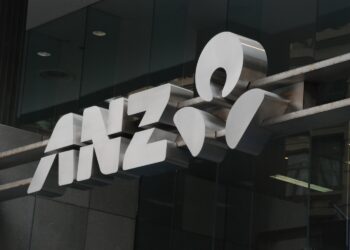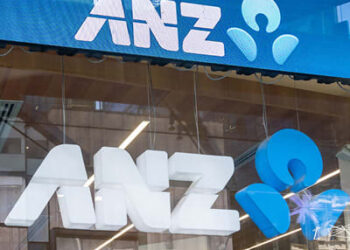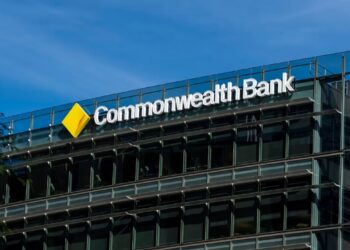The ECB has become the second global central bank to cut interest rates, following the Bank of Canada, announcing the rate would reduce to 3.75 per cent from a record high 4 per cent.
It signifies the ECB’s first rate cut in nearly five years, positioning the bank ahead of the US Federal Reserve and the Bank of England in starting an easing cycle.
“The Governing Council today decided to lower the three key ECB interest rates by 25 basis points,” the ECB announced.
“Based on an updated assessment of the inflation outlook, the dynamics of underlying inflation and the strength of monetary policy transmission, it is now appropriate to moderate the degree of monetary policy restriction after nine months of holding rates steady.”
Monica Defend, head of Amundi Investment Institute, said the decision came as no surprise. She explained that recent eurozone inflation data indicates there is no need for the central bank to cut again at its next policy meeting in July but believes further easing could come in September.
“The real question is how much the ECB can diverge from the Federal Reserve. We believe the scope for such divergence is limited since emerging signs of a US slowdown will give the Fed scope to ease,” Defend said.
“This is our base case and means that we think the risk of importing inflation will be minimal.”
However, she added any policy divergence that lasts for a while “could have spillover effects in the FX market”.
Meanwhile, Principal Asset Management’s chief global strategist, Seema Shah, highlighted ECB president Christine Lagarde’s comment that the bank is not in “dialling back phase”. For Shah, this signals back-to-back rate cuts are unlikely, therefore adding conviction to reduced rate cut expectations.
“The rationale for further rate cuts beyond June has become increasingly unclear recently. Euro area disinflation progress has started to stall with the latest inflation print surprising to the upside, while the ECB’s indicator of negotiated wages rose in Q1, defying the central bank’s expectations for an easing,” she said.
“In addition, evidence of solid employment growth and a cyclical economic upturn have reduced the market’s confidence that inflation will trend lower over the coming months.”
Shah added: “Although today’s decision was fully anticipated, the market will inevitably be pondering the fact that the ECB is cutting policy rates into a cyclical economic upturn, and despite upward revisions to its inflation projections.”
She believes the future pace of rate cuts is likely to be measured and gradual, given the ECB’s need to consider the Federal Reserve’s slower start to its rate cutting cycle and the associated downward pressure that it’s putting on the euro.
“We expect ECB rate reductions in September and December, with a July cut now off the table,” she said.
RBA in ‘limbo land’
In Australia, economic data coming in from the Australian Bureau of Statistics (ABS) in the last few weeks has painted a less than optimistic case for rate cuts this year.
On 5 June, the ABS indicated GDP in the March quarter delivered the slowest rate of annual growth in three decades, with GDP rising 0.1 per cent in the March quarter 2024 and 1.1 per cent since March 2023 (seasonally adjusted, chain volume measure).
A week prior, on 29 May, the ABS’ monthly CPI indicator print showed Australia still faces a sticky inflation challenge. The consumer price index (CPI) rose 3.6 per cent in the 12 months to April 2024, above the market expectation of 3.4 per cent.
GSFM investment strategist Stephen Miller said the productivity and unit labour cost growth measures revealed by ABS’ release will not dissuade the central bank from abandoning its current tolerance of a slower return of inflation in order to preserve as much of the labour market gains as possible.
“That means there is little prospect of a change in the policy rate at the RBA board meeting on 17–18 June and little prospect of a change in messaging from the ‘not ruling anything in or ruling anything out’ mantra that the governor has adopted,” Miller said.
Moreover, he said, “such messaging remains appropriate given the narrowness of the path”.
“Were, however, there to be a further upside surprise in the June quarter inflation numbers so that RBA’s trimmed-mean consumer price index inflation forecast of 3.8 per cent is exceeded, then the 5–6 August RBA board meeting may well have to consider increasing the policy rate further given the board’s ‘limited tolerance for inflation returning to target later than 2026’,” Miller said.
“My best guess – and it is just a guess – is that a further hike is unlikely given the likelihood that underlying weakness in activity growth will show through in a weaker labour market and allow a more confident projection of inflation declining toward target.”
However, he deemed an extended pause in any policy rate adjustment until the RBA is convinced that its current trajectory for the return of inflation to target is secure as the most likely scenario.
“That argues for a policy rate cut toward the end of the year or sometime in the first half of 2025.”







